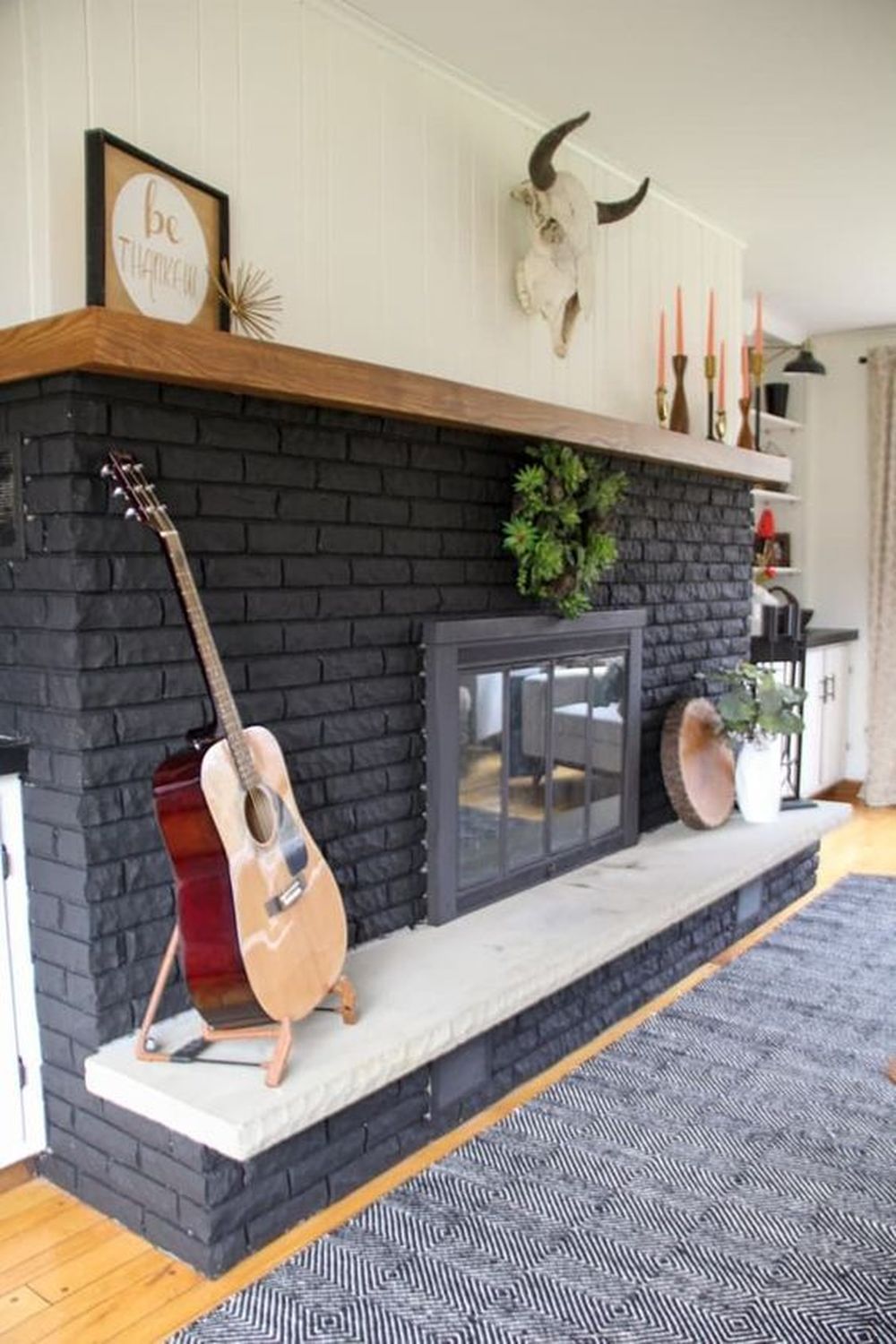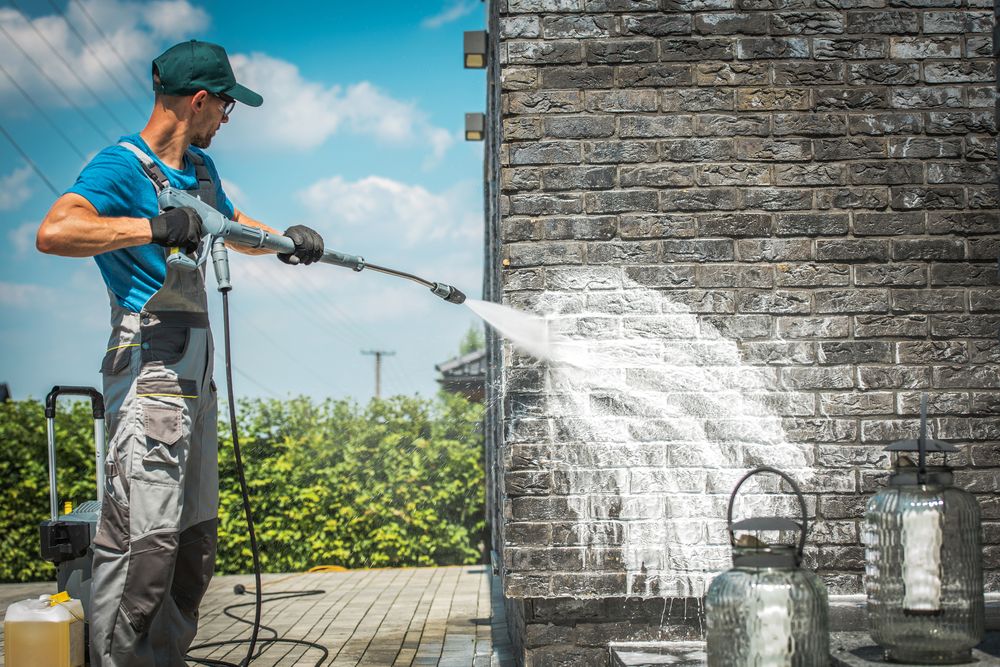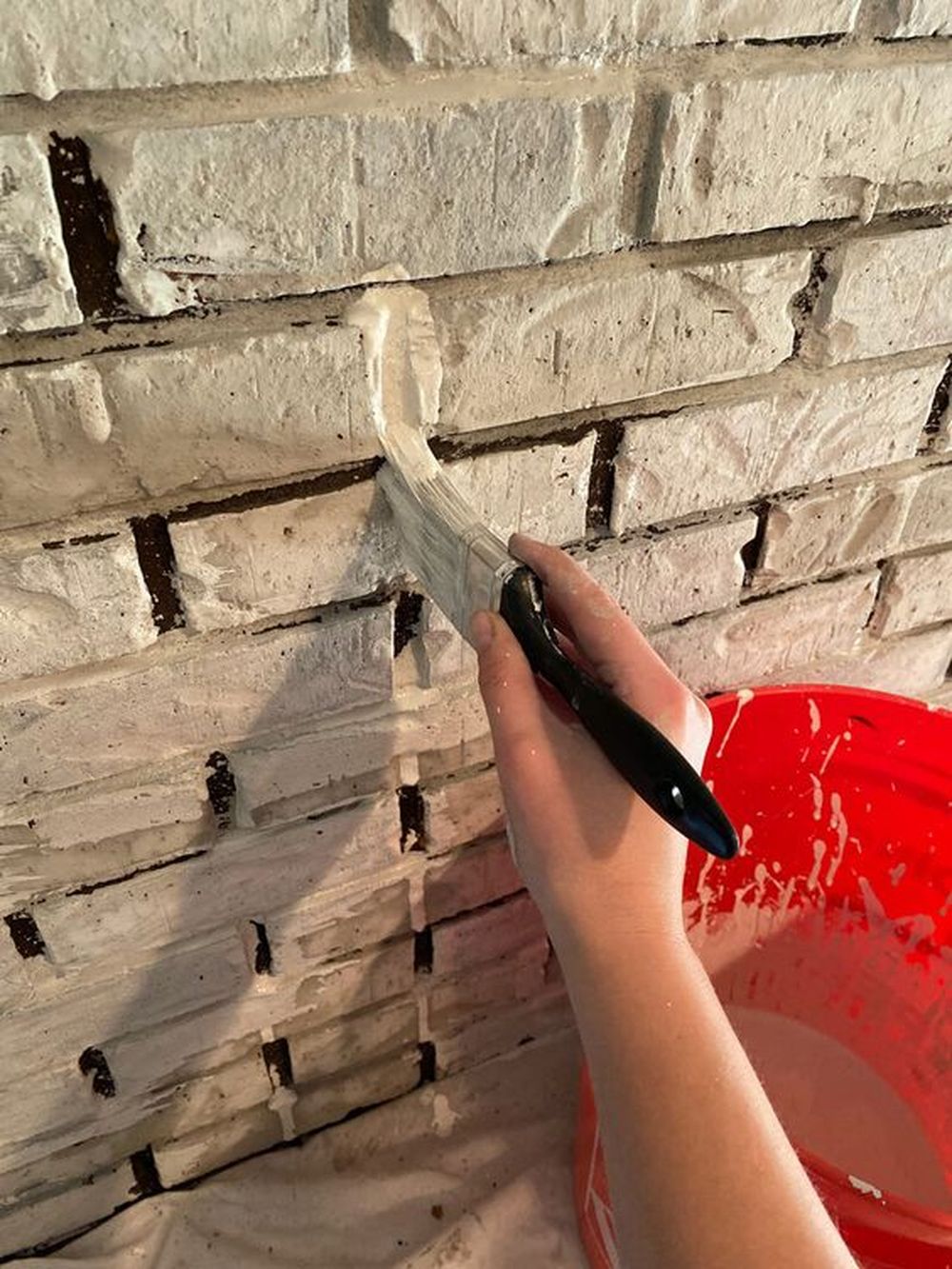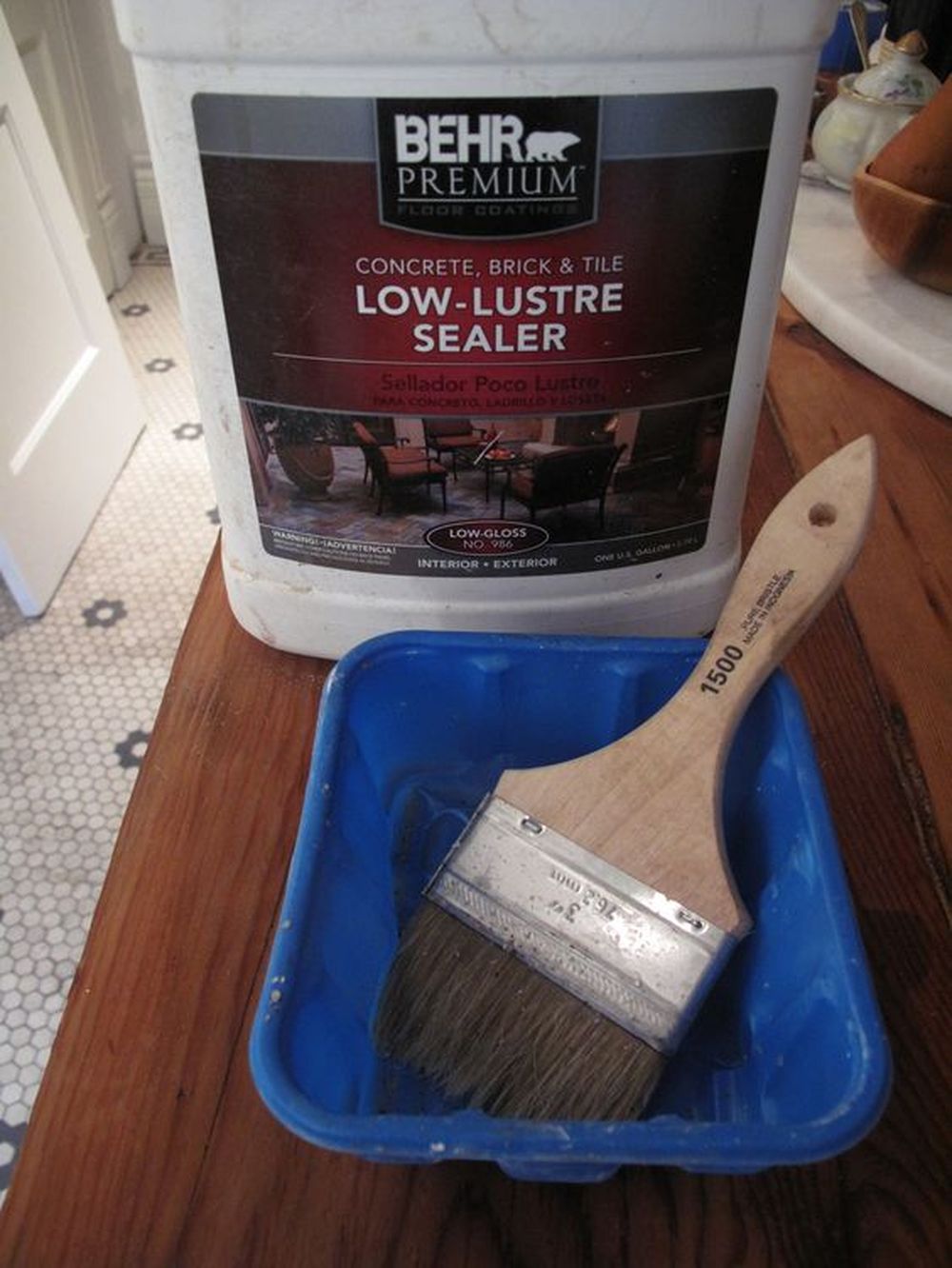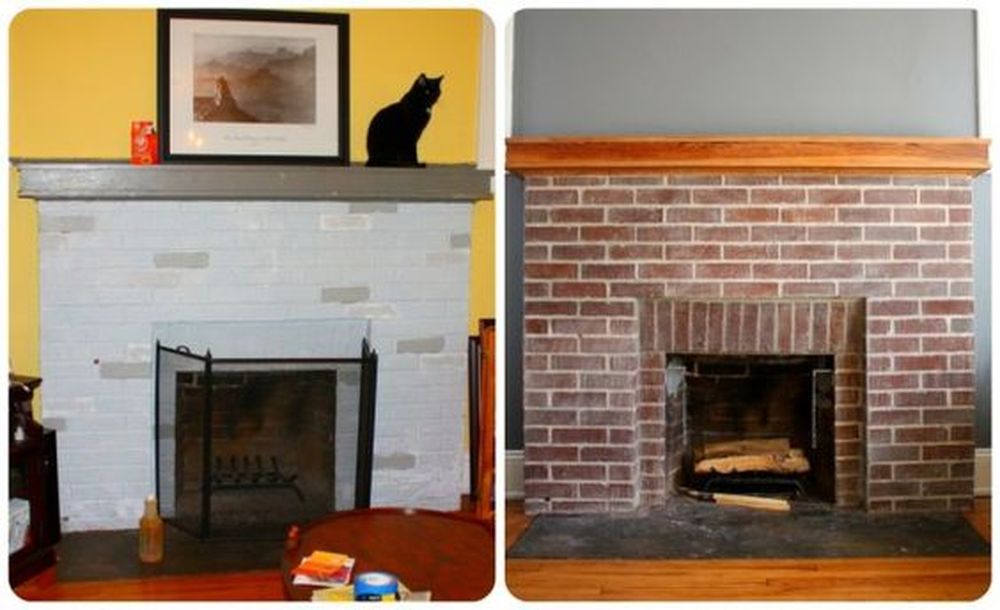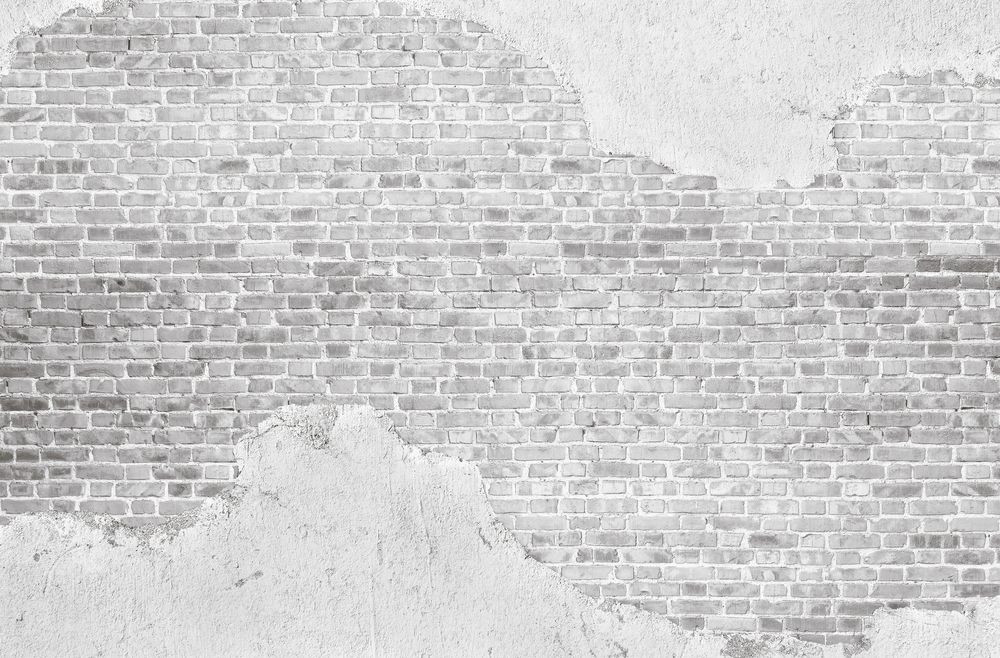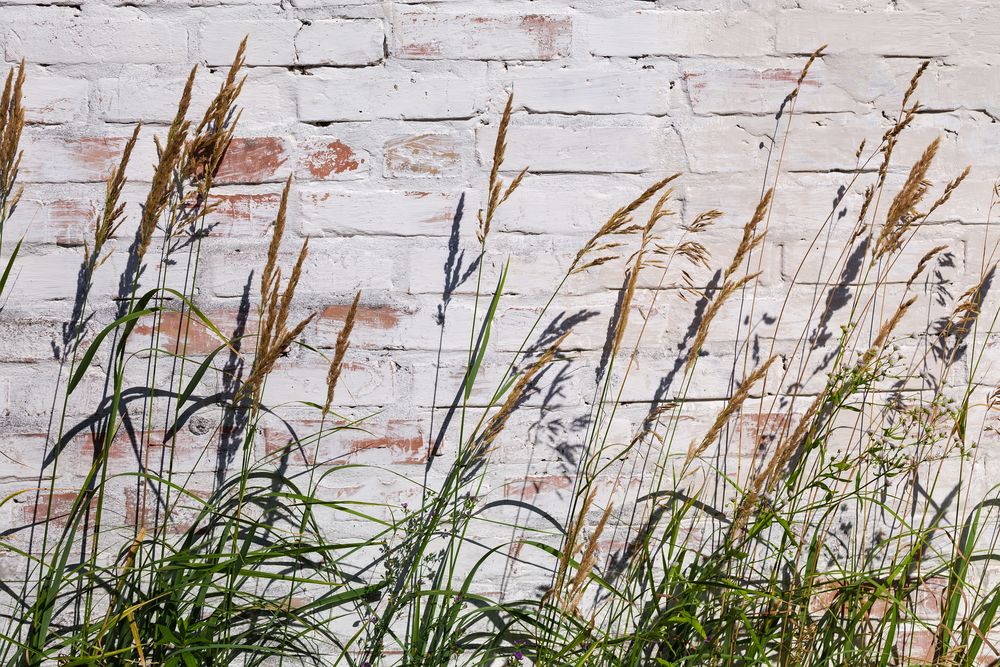How to Whitewash Brick Walls & Fireplaces
There are many reasons to whitewash bricks, and the benefits are endless. Whether you’re looking for an affordable way to paint your brick or you want to add some character to your home, whitewashing brick is the solution. It’s easy to do, with little hassle involved.
Not only can you easily add character to your home without any hassle, but it’s also fun! And in case social benefits are what you’re looking for, there are plenty of options.
Your neighbors will love you as they stare at the attractive brick building from their lawns. Or, give your home that rustic feeling by whitewashing the exterior brick. It will be like living in a cabin in the woods!
If you’re interested in whitewashing bricks, here’s everything you need to know!
Whitewash Brick
In construction, whitewashing is the process of applying a layer of white paint or primer to masonry units like bricks or stains to lighten their color. It can be used to brighten up brick walls or give them a new look. Whitewashing is also recommended to cover up brick stains or discoloration and protect bricks from humidity and pests.
Whitewash Brick Exterior
In exterior applications, the whitewashing process helps to protect bricks from water damage and from becoming dark from weathering. The paint or primer that is used in whitewash exterior brick painting contains a high level of titanium dioxide that reflects ultraviolet radiation and provides protection against fading.
Most exterior paints also have special additives that help repel moisture, provide mildew resistance and increase scrubbiness.
Whitewash Brick Interior
On interior walls, where humidity isn’t a problem, it’s possible to use low-luster or even matte finish paint instead of primer for the whitewash method.
Most latex paints are suitable for whitewashing interior brick because they adhere well to brick when applied with a brush or roller over a thin coat of primer. Paints with a satin or eggshell finish are usually recommended for this application.
Whitewash Brick House
Whitewashing an entire brick house gives it a fresh new look and provides some protection from humidity. It also creates a uniform appearance on the exterior. Besides, it’s an inexpensive solution compared to painting, used since ancient times.
Although you can whitewash a brick house by yourself, the job is time-consuming. It’s best to hire a professional to do the job. As far as costs are concerned, expect to pay around $0.45 to $0.80 per square foot.
Whitewash Brick Wall
Whitewashing a brick wall is the easiest way to transform its appearance. But before you start, check with your local authorities whether there are any restrictions on painting or whitewashing external brick walls. Most of the time, they are okay with these kinds of renovations, as long as it’s done correctly and with a non-toxic whitewash paint for brick.
If you want to whitewash walls without turning to a professional for help, the process is pretty simple. Start with cleaning the bricks from dirt, moss, or loose bits using water pressure. Next, apply primer if necessary and let it dry completely.
You can use an airless sprayer to apply the paint evenly over the bricks. Be sure to work in small sections to avoid patchy results. It can take up to an hour just for one coat, but several coats may be required to make a brick wall white.
Whitewash Brick Fireplace
A whitewash brick fireplace is a type of fireplace with external surfaces made of bricks that are usually plastered with white paint. Whitewashing a brick fireplace is similar to whitewashing a house, with two important differences.
First, remember that you’re working with fire. Make sure the fireplace is turned off and that all candles are extinguished before starting work or leaving the room for more than 10 minutes. Always keep water nearby in case of emergencies. Secondly, you have to protect the floor from the whitewash.
How to Whitewash Brick
Before starting a brick whitewashing project, make sure to gather the following tools and materials.
Whitewash Brick: Tools
- Trowel
- Chisel
- Rubber gloves
- Protective eyewear
- Bucket
- Plastic sheeting, newspapers, or cardboard
- Cotton rags
- Scrub brush
Whitewash Brick: Materials
- Water
- White paint or primer
- Dish soap
- Boric acid
- Ammonia
- Trisodium phosphate
How to Whitewash Brick Fireplace
Make sure you have all the necessary tools and materials before starting a brick fireplace whitewashing project.
If you’re wondering how to whitewash red brick, keep in mind that the following steps for whitewashing a brick fireplace also apply.
Step 1: Safety precautions
- Turn off the fireplace and extinguish all candles.
- Lay down some plastic sheeting, newspapers, or cardboard at the bottom of the fireplace to protect the floor. If using newspapers or cardboard, make sure they are thoroughly wet before applying the whitewash.
Step 2: Clean the brick and remove the grout
Take all the time you need for this part since it’s essential to preserve the aspect of the bricks. It’s best to start with a gentle cleaning method and work your way up to aggressive cleaning solutions:
Dish soap
Using dish soap is the gentlest method for cleaning brick. But it’s also the most frustrating one since it might not yield the results you want. Here’s what you need to do:
- Mix a few drops of dish soap in a bucket of water
- Soak a rag in the soapy water and wipe down the bricks
- Rinse the bricks with a clean rag and allow them to dry
Boric acid
It’s an all-purpose cleaner and stain remover. Here’s how to use it:
- Put on your rubber gloves
- Mix 1 gallon of water with 2 cups of boric acid in a bucket
- Soak a scrub brush in the mixture and scrub the bricks
- Rinse the bricks with a clean rag and allow them to dry
Ammonia
It’s a powerful cleaner with an unpleasant smell. But don’t worry! The smell goes away once the bricks are dry. Here’s what you need to do:
- Put on your protective eyewear and rubber gloves
- Mix 4 cups of warm water with a 1/3 cup of ammonia
- Dip the scrub brush in the mixture and gently scrub the bricks for about 30 seconds for each inch of the brick surface
- Rinse off the excess droplets with fresh water
- Let the bricks air dry before continuing with whitewashing or any further cleaning
Trisodium phosphate
It’s the most aggressive method but efficient at removing tough dirt or grime. Here’s what you need to do:
- Put on your rubber gloves and protective eyewear
- Mix 1 gallon of hot water with 2 cups of trisodium phosphate in a bucket
- Soak a scrub brush in the mixture and scrub the bricks
- Rinse off the excess droplets with fresh water
- If there are any stains left, repeat the cleaning process after adding more trisodium phosphate to the water
Step 3: Remove any old paint
If the brick fireplace was painted before, it’s necessary to eliminate any old and lingering paint before applying the whitewash. In the case of old houses, it’s possible that paint was preserved over time, making it more challenging to remove it thoroughly. You might have to resort to a professional for this part of the job.
Otherwise, be sure to clean the paint using a mixture of water and trisodium phosphate. If you had already done this in the previous stage when you were cleaning the bricks, any old paint should be already removed by now.
Step 4: Prepare the whitewash
To make the whitewash, mix the following materials in a bucket: 1 gallon of water, 3/4 cups of white paint or primer, 1/2 tsp of boric acid, 1 tbsp of dish soap, 3/4 cups of ammonia, and 2 cups trisodium phosphate.
If you want to lighten the bricks more, add more paint to the water. You should test by applying the whitewash on a single brick. Keep in mind that the whitewash will look completely different once it dries off, so don’t try to skip the waiting step (24 hours). Then you can check to see if you are pleased with the results. Otherwise, add more paint as needed.
Step 5: Apply the whitewash
Now that you have prepared the whitewash, it’s time to apply it:
- Start with a small section at the lower part of the fireplace
- Use a 3/4-inch paintbrush to apply the whitewash
- Make sure to get the whitewash into all the nooks and crannies of the brick
- If needed, add more whitewash to the brush
- Work your way up, section by section, until you reach the top of the fireplace
- Don’t forget to apply it on the front and sides of the fireplace too
- Allow the whitewash to dry for 24 hours before using or lighting a fire in the fireplace
- If you’re not happy with how it turned out, you can always re-whitewash it. However, make sure that you allow enough time for the first coat to dry completely
Some people prefer working with a spray bottle and cotton cloth instead of a paintbrush. If you like this option, fill the spray bottle with water, lightly spray a small portion of the bricks, lightly dip the cloth in the whitewash, and wipe the fabric on the wet surface. But you still need a dry paintbrush to reach the nooks and crannies.
Step 6: Seal the whitewashed brick
After allowing enough time for the whitewash to dry, you should seal it. It will protect the bricks from chipping, moisture, and damage caused by smoke or soot.
Be sure to choose a quality sealant for your fireplace mantel, such as a low-sheen sealer. You can find it at Home Depot and other similar stores. Apply the sealer with a wide paintbrush and let it dry. It’s significantly faster than applying the whitewash.
Whitewash Brick Fireplace vs. Whitewash Stone Fireplace
If you’re wondering how to whitewash a stone fireplace, keep in mind that it’s more difficult and time-consuming than having to whitewash a fireplace made out of brick. It should only be used on dry stones with no cracks. Plus, the surface must not have any loose particles because they would create a mess when applying the whitewash.
Therefore, you need to be extra careful while cleaning. For instance, you can’t use a paintbrush, especially on the nooks and crannies. Instead, you need a spray bottle and a cotton cloth to apply the whitewash.
On the other hand, you will need to use a sealant to help protect the stone from any damages. And you should also use a primer before applying the whitewash.
Make sure to choose a shade of white that will complement the stone and the rest of your décor. You can also experiment with different techniques to create a unique look for your fireplace.
FAQ: Learn More About Brick Whitewashing
What kind of paint is best for whitewashing brick?
The best kind of paint for whitewashing bricks is non-toxic, low-VOC paint. It’s important that it doesn’t contain any harsh chemicals or toxins that can cause harm to you or your family.
Any interior latex paint will work fine for whitewashing interior constructions, like a fireplace. You can even use leftovers from a previous project, as long as it’s latex paint. However, it’s best to avoid glossy or semigloss paints since they can be too slippery for a fireplace mantel.
What are the benefits of brick whitewashing?
Not only is it a practical method for lightening up dark bricks, but also it gives old fireplaces an attractive finish without having to use another form of decoration. Plus, it protects the bricks from moisture and soot damage.
How much does it cost to hire someone to whitewash my fireplace?
It depends on where you live and how big your fireplace is. For example, if you have a small fireplace that just needs one coat of whitewashing, you might be able to get it done for under $100. However, if your fireplace is larger than average and requires two coats or more, expect the price range to go up to around $200-$400.
How do I maintain the whitewashed brick?
To keep the bricks protected, you should reapply another coat (or more depending on how worn out it looks) every 6-12 months. Try not to let water accumulate on it, too, because this can cause mold and mildew to form, gradually damaging the finish over time.
Do you need to seal whitewash brick?
You should apply at least one coat of sealant to protect the whitewashed brick or whitewashed brick backsplash from damage due to hard water, soot, chemicals, and other harsh elements. It’s imperative if you live in an area with a high level of salt in the air – such as near the ocean – because this can cause stains and discoloration.
What are some tips for applying whitewash?
The best thing you can do is prepare and practice ahead of time. If it’s your first time doing it yourself, you’re better off practicing by coating a few bricks with paint on your own before beginning the job. Then you won’t end up having to spend more money or hire someone else later on.
Don’t forget to wear protective clothing and gloves when whitewashing your fireplace! When finished, the whitewash should have a nice, even sheen. It’s beautiful, practical, and easy to do.
Can you use a roller to whitewash brick?
You can use a roller if you’d prefer. This will make the job faster because it’s quicker to apply. However, don’t expect as smooth results compared to using a paintbrush. If you go this route, make sure that the bricks are completely free of any dust or residue.
How do you clean brick before whitewashing?
Before whitewashing brick, you must clean it to remove any dirt, dust, or residue. You can do this by using a stiff brush and some soapy water. Be sure to rinse off the bricks entirely afterward. If your bricks are dirty or stained, you might need to use a more potent cleaning agent like bleach or trisodium phosphate. If you’re outside, you can use a pressure washer.
Can you use flat paint to whitewash bricks?
No, using flat paint will not give you good results when whitewashing bricks. It will be more challenging to apply, and the finish won’t be as smooth. Plus, it might not last as long as a coat of glossy or semigloss paint.
When whitewashing brick, what is the best way to avoid streaks?
The best way to avoid streaks is by applying thin layers and ensuring that you don’t leave too much paint on the surface. It’s better to use multiple layers than one thick coat because it will give the whitewash a natural look when it dries.
How do I restore whitewashed brick?
Restoring whitewashed brick can be tricky, but it’s not impossible. If the whitewash has been damaged or is starting to peel off, you can try using a sealant to help protect it. However, if the brick is severely damaged, you might need to remove the whitewash and start from scratch completely. Be sure to practice on a small section before beginning the job.
Is it better to whitewash or limewash brick?
Limewashing is one of the best ways to spruce up your fireplace, especially if you want a more decorative look. It’s elementary to do at home yourself, and it will give your fireplace an aged appearance that looks beautiful with the fire burning.
However, whitewashing is the way to go if you need something simple yet effective to protect your brick from soot and other damages. There are many different ways to do it, and you can choose the method that fits your needs and preferences. In the end, it’s up to you which option you select since both are great options.
What’s the difference between painting and whitewashing?
White-painted brick and whitewashing brick aren’t that different since the result is usually the same. The main difference between these two methods is what kind of paint you use to achieve it.
Whitewashing involves using a particular type of paint, while painting usually involves oil-based or latex paint. Whitewash will provide a sheen to the bricks, whereas paint will make them look more matte.
Can you whitewash with different colors?
Yes, you can use different colors when whitewashing bricks. It will make it easier to achieve a specific theme if you plan on using this technique in your fireplace. Just be sure that your base color is suitable for any other decoration such as wallpaper or rugs. For instance, if you want a gray whitewash brick fireplace, use gray paint instead of white.
Can I paint my bricks and still keep the whitewash effect?
Yes, you can paint your bricks and still achieve the whitewash effect. It’s an excellent option if you want to change the color of your brick but don’t want to lose the traditional look that comes with whitewashing. Just be sure to use a whitewash primer before applying your chosen paint color.
How do you whitewash brick that is already painted?
If you have already painted bricks and want to whitewash it, you will need to remove the paint first. To do this, use a chemical stripper or sandblast the brick. After removing the paint, you can proceed with whitewashing it as usual.
Can I use acrylic paint for whitewashing?
No, acrylic paint should not be used for whitewashing. It is a water-based paint, which means it won’t work well with the lime and water mixture required for this process. Stick to using latex or oil-based paints instead.
Can I use spray paint to whitewash brick?
No, you shouldn’t use spray paint to whitewash brick. Spray paints are too thin, resulting in streak marks that will throw off the overall look of the job. Try using a brush instead to achieve even results.
How to whitewash brick with chalk paint?
If you’re looking for an easy, no-fuss way to whitewash your brick, try using chalk paint. This type of paint is very forgiving, so you don’t have to worry about making any mistakes. It’s also a great option if you want a distressed look for your brick.
To get started, mix the chalk paint with water until it reaches the desired consistency. Then, apply it to the brick in thin layers using a brush. Be sure to allow each layer to dry completely before applying the next one. You can also distress the paint by using a sanding block once it’s scorched.
How long does whitewashing last?
Whitewashing will usually last around 3-5 years, but this can vary depending on the type of paint used and the climate conditions. Be sure to reapply every few years to keep your brick looking fresh.
What about using a whitewash brick wallpaper?
If you’re looking for a way to add some character to your brick fireplace, try using whitewash brick wallpaper. It’s an excellent solution if you don’t want to paint the brick since it will still give you the same overall look.
To get started, measure the area you want to cover and then cut the wallpaper to size. Next, soak it in water for a few minutes until it’s completely saturated. Then, apply it to the brick in a smooth, even layer. Be sure to press down on it firmly so that it sticks well. Allow it to dry completely before applying any additional layers.
Can you whitewash brick paneling?
Yes, you can whitewash brick paneling or faux bricks. This is a great way to add some character to your space, and it’s a lot easier than painting the brick itself. The process is similar to whitewashing regular bricks.
Can you whitewash a brick floor?
Sealing brick floors with a whitewash solution is also possible. It can be done by mixing lime with water until it creates a paste. Then, allow the paste to dry completely before rinsing it off.
Can I use bleach to whitewash brick?
No, it would be best not to use bleach when whitewashing brick because it can damage it. You will have better results if you use a different solution, such as white vinegar or lemon juice mixed with water.
What is German whitewash brick?
Also known as German smear, German whitewash brick is a masonry treatment that uses mortar mixed with cement instead of paint to whitewash bricks. It can also be used on stone or concrete. Worth noting is that German smear is not a valid whitewashing method since it doesn’t use lime as the main ingredient.
How to remove whitewash from brick?
If you want to remove the whitewash from bricks, try using a pressure washer. Please test it out on a small area first to ensure that it doesn’t damage the brick. You can also try using a scrub brush and some hot water to remove the whitewash.
Be very careful when getting rid of the whitewash since it’s easy to damage the bricks. It’s always best to consult with a professional instead of taking on this challenging job yourself.
Can I use ceiling paint to whitewash brick?
No, you shouldn’t use ceiling paint to whitewash brick since it’s not meant for this type of project. Ceiling paint is designed to withstand more moisture than regular paint, so it will prevent the bricks from breathing correctly. It can cause damage over time, so it’s wise to avoid using this type of paint on your brick.
Final Thoughts on Whitewash Brick
If you want to achieve a traditional look without losing too much time, whitewashing your brick is the way to go. It’s easy to do and won’t cost you a fortune if you have to redo it in the future.
Plus, there are many different colors that you can choose from, not just white. Just keep in mind that this method isn’t meant for houses with a lot of moisture since it will eventually start crumbling off.
What does your fireplace look like after whitewashing it? Be sure to share your photos with us in the section below!

